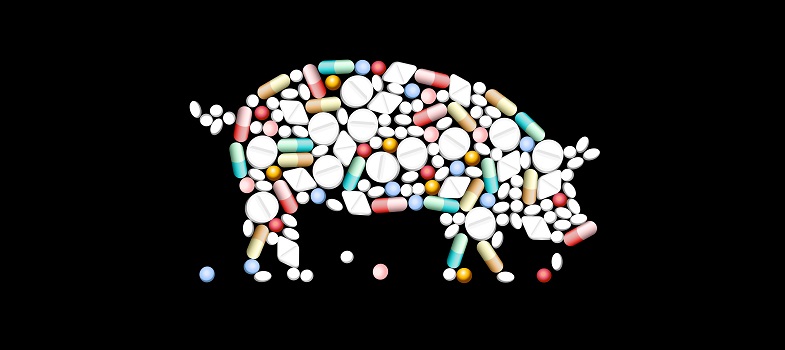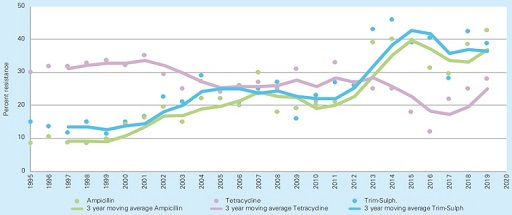2.2.1 Benefits to animal health and welfare
Surveillance activities of resistance in pathogens in food-producing animals will generate evidence to inform the control of bacterial diseases, and have benefits for animal health and welfare. This can be at the farm level, and benefit the farmer, but it could also be as part of a national surveillance programme to control a disease, which could also benefit the industry. An example of this can be a control programme to address mastitis caused by methicillin-resistant Staphylococcus aureus (MRSA). These kinds of surveillance activities are passive, relying on the submission of clinical samples from the farmers or practitioners.
For example, the monitoring of resistance in Escherichia coli from pigs with diarrhoea in Sweden (Figure 5) showed that multidrug resistance to ampicillin and trimethoprim-sulphamethoxazole increased from 20 to 42% in the last years (Aspevall et al., 2020). This type of data is also used to inform prescribing practices and recommendations, such as to support the routine susceptibility testing in cases of diarrhoea before administering the antimicrobial. The effect on the prevalence of resistance has not yet been reported.
2.2 Benefits of surveillance




